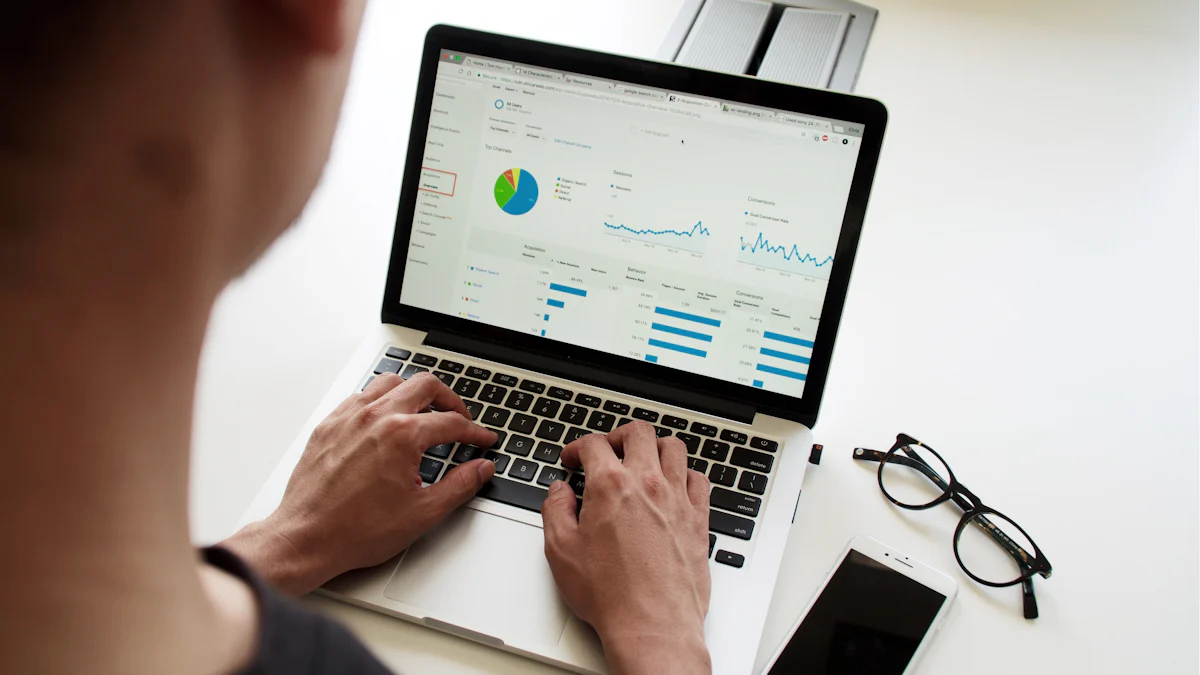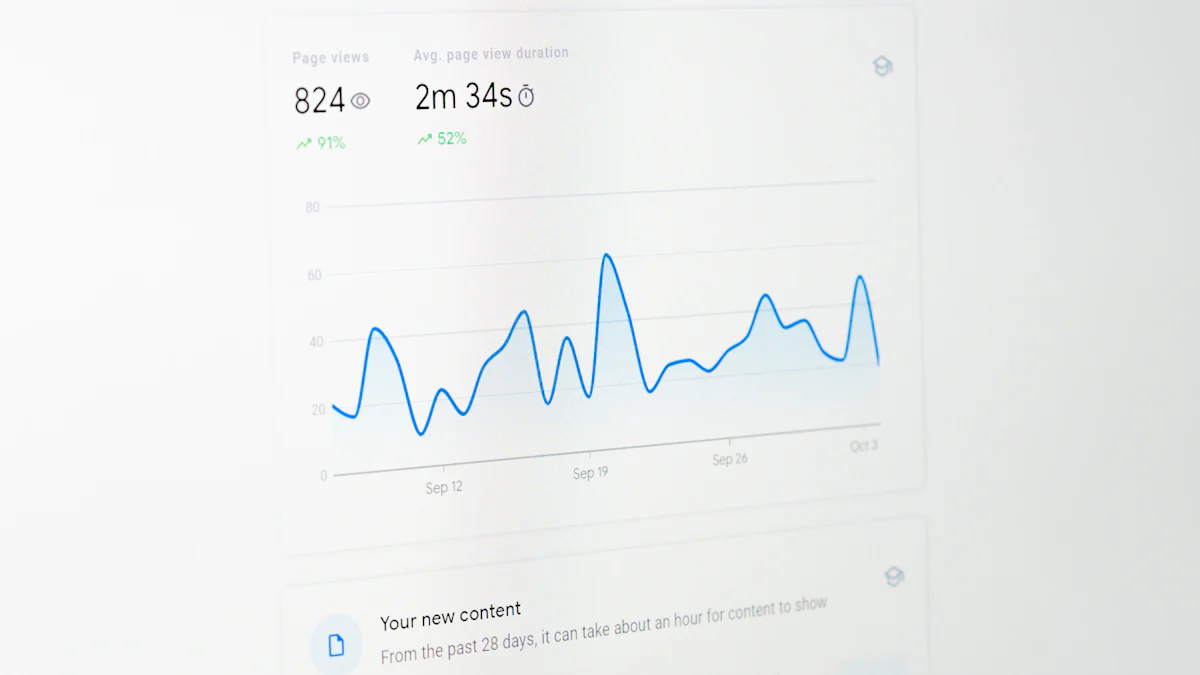


LinkedIn Impressions quantify the visibility of your content on the platform. Each impression occurs when your post or profile appears on a user's screen. This metric provides insights into how often your content reaches potential audiences. In social media metrics, impressions help measure reach and visibility. Understanding these impressions is crucial for crafting an effective LinkedIn strategy. High impressions indicate broader audience exposure, which can enhance engagement and brand awareness. Monitoring impressions allows you to evaluate content performance and make informed decisions.
Understanding LinkedIn Impressions

Definition and Explanation of LinkedIn Impressions
What are LinkedIn Impressions?
LinkedIn Impressions measure how often content appears on users' screens. Each impression occurs when a post, article, or update displays to a LinkedIn member. Impressions quantify the visibility of content on the platform. This metric includes views from profiles, posts, and updates. Both paid and viral impressions contribute to the overall count. Paid impressions result from advertising campaigns. Viral impressions occur when others share content.
How Impressions are Counted
LinkedIn counts an impression each time content appears on a user's feed. The content must display for at least 300 milliseconds. At least 50% of the content must be visible on the screen. Multiple views by the same user increase the impression count. The total number reflects the exposure level of the content. Impressions do not require user interaction or engagement.
Difference Between LinkedIn Impressions and Other Metrics
Impressions vs. Views
Impressions and views differ in significant ways. Impressions count every instance content appears on a screen. Views track when users actively engage with content. A view requires clicking or interacting with a post. Impressions provide a broader measure of reach. Views offer insights into user interest and engagement.
Impressions vs. Engagement
Engagement involves actions like likes, comments, and shares. Impressions measure only how often content displays. High impressions indicate wide reach. Engagement metrics show how users interact with content. Both metrics help evaluate content performance. Impressions highlight potential audience size. Engagement reveals content effectiveness and resonance.
Importance of LinkedIn Impressions
Measuring Reach
How Impressions Reflect Audience Size
LinkedIn Impressions show how often your content appears on users' screens. A higher number of impressions indicates a larger audience size. This metric helps you understand the potential reach of your posts. More impressions suggest that more people see your content, which can lead to increased visibility.
Role in Brand Awareness
LinkedIn Impressions play a crucial role in building brand awareness. When your content frequently appears, it reinforces your brand's presence. Consistent impressions help keep your brand top-of-mind for users. This visibility can lead to greater recognition and trust in your brand.
Impact on Engagement
Correlation with User Interaction
Impressions can influence user interaction. While impressions measure visibility, engagement metrics like clicks, comments, and shares show user interest. A high number of impressions may lead to increased engagement. Monitoring both helps you evaluate content effectiveness.
Influence on Content Strategy
LinkedIn Impressions guide your content strategy. Analyzing impressions alongside engagement rates provides valuable insights. If impressions are high but engagement is low, you may need to adjust your approach. Aligning content with audience preferences can enhance both visibility and interaction.
Strategies to Improve LinkedIn Impressions

Content Optimization
Best Practices for Post Timing
Posting at the right time can significantly enhance LinkedIn Impressions. Analyze when your audience is most active. Use LinkedIn analytics to determine peak engagement periods. Schedule posts during these times to maximize visibility. Consistency in posting signals activity and value to your audience. Regular updates keep your content fresh and engaging.
Utilizing Visual Content
Visual content captures attention more effectively than text. Use images, videos, and infographics to boost LinkedIn Impressions. Visuals make your posts more appealing and shareable. High-quality visuals increase the likelihood of user interaction. Incorporate branding elements to reinforce brand identity.
Audience Targeting
Identifying Key Demographics
Understanding your audience is crucial for improving LinkedIn Impressions. Identify key demographics that align with your goals. Use LinkedIn's targeting tools to reach specific groups. Tailored content resonates better with targeted audiences. Analyzing competitor strategies can provide insights into successful targeting.
Tailoring Content to Audience Needs
Content must align with audience interests to increase LinkedIn Impressions. Research what topics engage your audience. Create content that addresses their needs and challenges. Use case studies to illustrate successful strategies. Adapt your approach based on feedback and performance metrics.
Case Studies:
-
Success Stories on LinkedIn: Top brands achieved impressive results by adapting strategies.
-
Consistency proved key in boosting impressions and signaling value.
-
LinkedIn Benchmarking Reports: Highlighted strategies that helped brands stand out.
Limitations and Considerations of LinkedIn Impressions
Understanding the Limitations
Why Impressions Alone Aren't Enough
LinkedIn Impressions provide valuable insights into content visibility. However, impressions alone do not measure the full impact of your LinkedIn profile. High impression counts indicate that many users see your content. Yet, impressions do not reveal how users engage with it. Viewer interaction and content quality offer a more accurate reflection of audience interest. Impressions need to be complemented with other metrics like clicks and shares.
Balancing Impressions with Other Metrics
Balancing LinkedIn Impressions with other metrics is essential for a comprehensive understanding. Impressions count the total number of views. Reach counts the number of unique users who see your content. Engagement metrics like likes and comments show how users interact with your posts. Analyzing these metrics together provides a fuller picture of content performance. This approach helps in making informed decisions about content strategy.
Practical Considerations
Analyzing Data for Better Insights
Analyzing LinkedIn Impressions alongside other data leads to better insights. Impressions offer a snapshot of content reach and audience visibility. Digging deeper beyond impression counts uncovers the true impact of your content. Organic impressions reflect genuine interest from the audience. Factors like relevance and engagement play a role in this analysis. Use LinkedIn analytics tools to track these metrics effectively.
Adjusting Strategies Based on Performance
Adjusting strategies based on performance metrics enhances LinkedIn success. High LinkedIn Impressions suggest good visibility. However, low engagement may indicate a need for content adjustment. Align content with audience preferences to boost both visibility and interaction. Experiment with different formats like video posts to enhance engagement. Regularly review performance data to refine your LinkedIn strategy.
LinkedIn impressions offer a vital measure of your content's reach. Understanding impressions helps you enhance visibility and engagement. Leverage these insights to craft a strategic advantage on LinkedIn. Explore LinkedIn analytics to gain deeper insights into your audience. Use this data to refine your approach and maximize impact. Building a strong online presence requires more than just views. Focus on making each impression count for meaningful connections and growth.
FAQ
LinkedIn Impressions occur when your content appears on a user's screen. Each impression measures visibility but not engagement. High impressions indicate broad reach.
Impressions show how often content displays. Engagement involves actions like clicks and shares. Both metrics provide insights into content performance.
Impressions help measure content reach. More impressions mean higher visibility. This visibility can lead to increased brand awareness.
Optimize your profile for completeness and professionalism. Use visual content to capture attention. Post during peak activity times for better reach.
High impressions do not guarantee success. Engagement from impressions matters more. Focus on turning visibility into meaningful interactions.
Profile completeness and content quality influence impressions. Engaging posts attract more views. Consistent activity boosts visibility.
Use LinkedIn analytics to monitor impressions. Analyze data to understand audience reach. Adjust strategies based on performance insights.
Continue Reading About LinkedIn Impressions
10 Game-Changing Project Management Reporting Types!
Unlock project success with 10 must-know reporting types! Track progress, manage risks, and stay on budget like a pro.
Lewis
Mar 03, 2025
10 Must-Have Marketing Agency Reporting Tools for Your Success
Optimize your agency's performance with top reporting tools. Explore analytics, social media, SEO, and more for data-driven decisions and efficiency.
Lewis
Oct 09, 2024
15 Best Software Reporting Tools for 2025
Explore the top 15 software reporting tools for 2025. Compare features, pricing, and usability to find the best fit for your business needs.
Lewis
Oct 08, 2024
2025 Best Data Integration Solutions and Selection Guide
Explore top data integration solutions for 2025, enhancing data management and operational efficiency with leading platforms like Fivetran and Talend.
Howard
Dec 19, 2024
2025's Best Data Validation Tools: Top 7 Picks
Explore the top 7 data validation tools of 2025, featuring key features, benefits, user experiences, and pricing to ensure accurate and reliable data.
Howard
Aug 09, 2024
Augmented Analytics: Unlock the Core Concepts & Benefits!
Discover augmented analytics—where AI and ML automate data prep and insights, revolutionizing decision-making for smarter, faster business strategies!
Lewis
Mar 04, 2025


